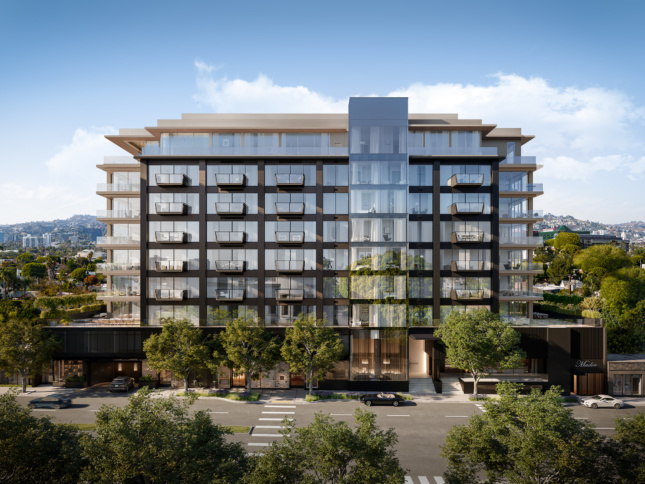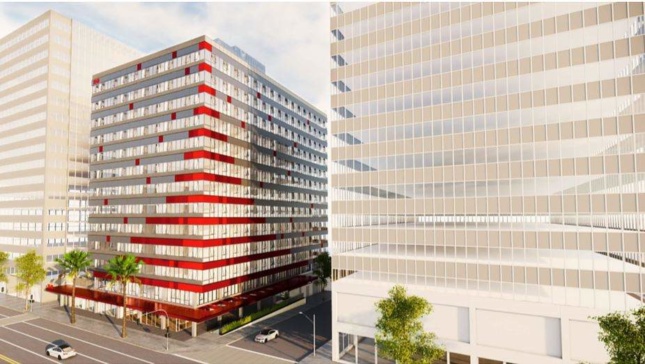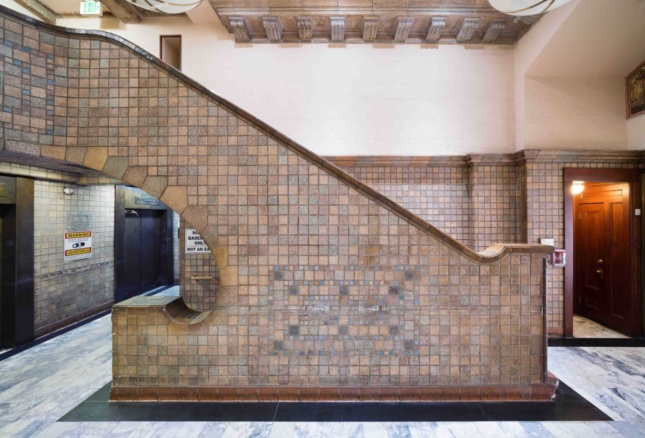Los Angeles is not known for holding on to its architecture, whether those structures are architecturally significant or hastily constructed. Rare examples of streamline art deco, international modernism, and neo-Egyptian architecture have all met the wrecking ball to make way for contemporary alternatives. In the last few years, however, adaptive reuse has breathed new life into many of the city’s forgotten yet exemplary buildings, and the transformation of office buildings into residential complexes in particular is gaining significant traction as an alternative to demolition.

In 2015, a 10-story building in West Hollywood, designed by Richard Dorman in 1964, was purchased by local real estate investment firm Townscape Partners with plans to transform the quirky structure into a residential complex.
With the help of Olson Kundig, the international architecture firm behind projects including Washington State University’s Jordan Schnitzer Museum and the renovation of the Seattle Space Needle, the office building will become a 48-unit residential complex. The firm’s approach towards adaptive reuse intends to maintain the original integrity of the building by setting all of the new additions away from the street while renovating much of the building’s modernist exterior detailing, including the signature concrete balconies facing Beverly Boulevard.
An innovative curtain wall glazing system on the upper floors and generously-sized roof terraces will help dissolve the boundary between inside and out to complement the openness of the original design. For shading and privacy, the renovated facade will be outfitted with an operable vertical shutter system. And true to the Olson Kundig name, the interiors of the new building will be materially sumptuous, including patinated bronze wall panels, custom-designed bronze detailing, and travertine floors throughout.

On the other side of the city on a busy stretch of Wilshire Boulevard in Koreatown, Jamison Services Inc. has been hard at work converting a 13-story office building from the 1950s into accommodations for 206 units with ample retail space on the ground floor. Local firm CORBeL Architects was hired to oversee the renovation, and renderings reveal that the massing and horizontal bands of the original building will be kept intact, with the addition of distinct red patterning on its most visible corner from the street.
The construction team has already begun the process of transforming the building’s interiors, and CORBeL Architects estimates that the project will be completed by late 2020.

In Downtown Los Angeles, construction recently began on the adaptive reuse of the Lane Mortgage Building, a 12-story structure designed in 1923 by local architect Lester Loy Smith. After the building was acquired by the Delijani Family, they hired Downtown-based architecture firm Omgivning—responsible for renovating several other turn-of-the-century buildings in the immediate area—to oversee the project, which calls for transforming the upper floors of the building into accommodations for 109 rental apartments, some of which will be under 400 square feet. According to the firm, the units will feature “creatively-deployed areas for seating and storage,” to demonstrate the livability of small living spaces within adaptively reused buildings. The largest unit will be an 1,100-square-foot penthouse on the top floor with its own access to private outdoor access.
The firm is maintaining several of the building’s quirky details, including the historically significant tilework in its entry lobby created by artisan Ernest Batchelder. Set to be completed by Spring 2020, the project will also include a bar in its basement that is sure to evoke the speakeasies that were common in the area when the building was first completed.











